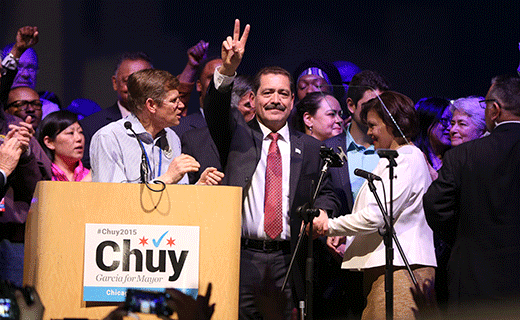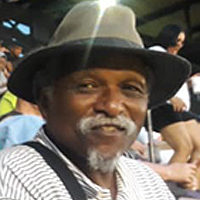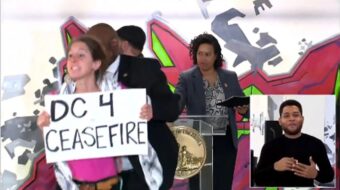
CHICAGO – As the supporters of the Jesus Chuy Garcia campaign gathered at the Alhambra Palace here after the elections in February it had become clear that not only had a run-off against Mayor Emanuel been achieved in the primary but that he had obtained almost 34 percent of the vote. It was the first time an incumbent had been forced into a run-off in Chicago and there was a feeling of coming victory.
Chuy was developing a narrative of Chicago as a tale of two cities, one of a gleaming downtown, the other of neighborhoods being neglected.
It is a city where the rich corporations are not paying their fair share of taxes and the poor are being fleeced through red light traffic schemes to raise revenues on the backs of working class people.
It is city plagued by violence, leading the nation in murders every year of Emanuel’s mayoralty.
It is a city that closed 50 schools mainly in Black and Latino neighborhoods by fiat. Yet, the next day following that February primary, the issue in the media became: What is Chuy’s financial plan? Did he have the skill to manage a city budget?
Chuy was hammered by the media and the Emanuel campaign to be specific. He proposed cutting tax increment financing districts and sharing expenses with other governments and possibly a graduated income tax, which was said to be unconstitutional in Illinois. He argued upon election he would audit the books to see how money was spent and how to make changes, something not done by Emanuel.
The question of finances and managing the budget would not go away for Chuy , but the same concern was not raised about the horrible financial condition of the city under Emanuel’s leadership. Under Emanuel the city’s bond rating has been downgraded five times. It is barely above junk status. No determination was made on how to make payments for pensions.
Emanuel’s narrative was that he is leading the city in the right direction, making hard tough decisions and that the city could not afford to make a change and risk becoming bankrupt like Detroit. Chuy challenged this narrative as not being enough, with working and poor people suffering as a consequence, but there was little challenge from the media.
Of course, money does matter, Emanuel outspent Chuy $23 million to $6 million and while not knowing how all the money was spent, television and radio was saturated with commercials for Emanuel. While Chuy was constantly seeking ways to introduce himself to the electorate, Emanuel was recreating himself as a gentler person that was learning to listen to people’s concerns and defining Chuy through negative commercials as not prepared for the job.
Chuy was able to run a competitive campaign due to committed volunteers that provided a strong ground game. The unions provided money and workers. The Chicago Teacher Union, SEIU, Amalgamated Transit Union Local 308 and the Electrical Workers Western Region among others contributed significantly. Emanuel also claimed union support, especially surrounding himself in commercials with union members.
In the Apr. 17 run-off election Emanuel won 64 percent of the white vote, 57 percent of the Black vote and 39 percent of the Latino vote. He was able to increase his Black vote by 14.5 percent, the white vote by 11.25 percent.
This election deserves serious study by progressive forces. Among the most important question to solve is how to interest the over 50 percent of people who don’t participate in Chicago politics.
Photo: Terrence Antonio James/AP & Chicago Tribune












Comments